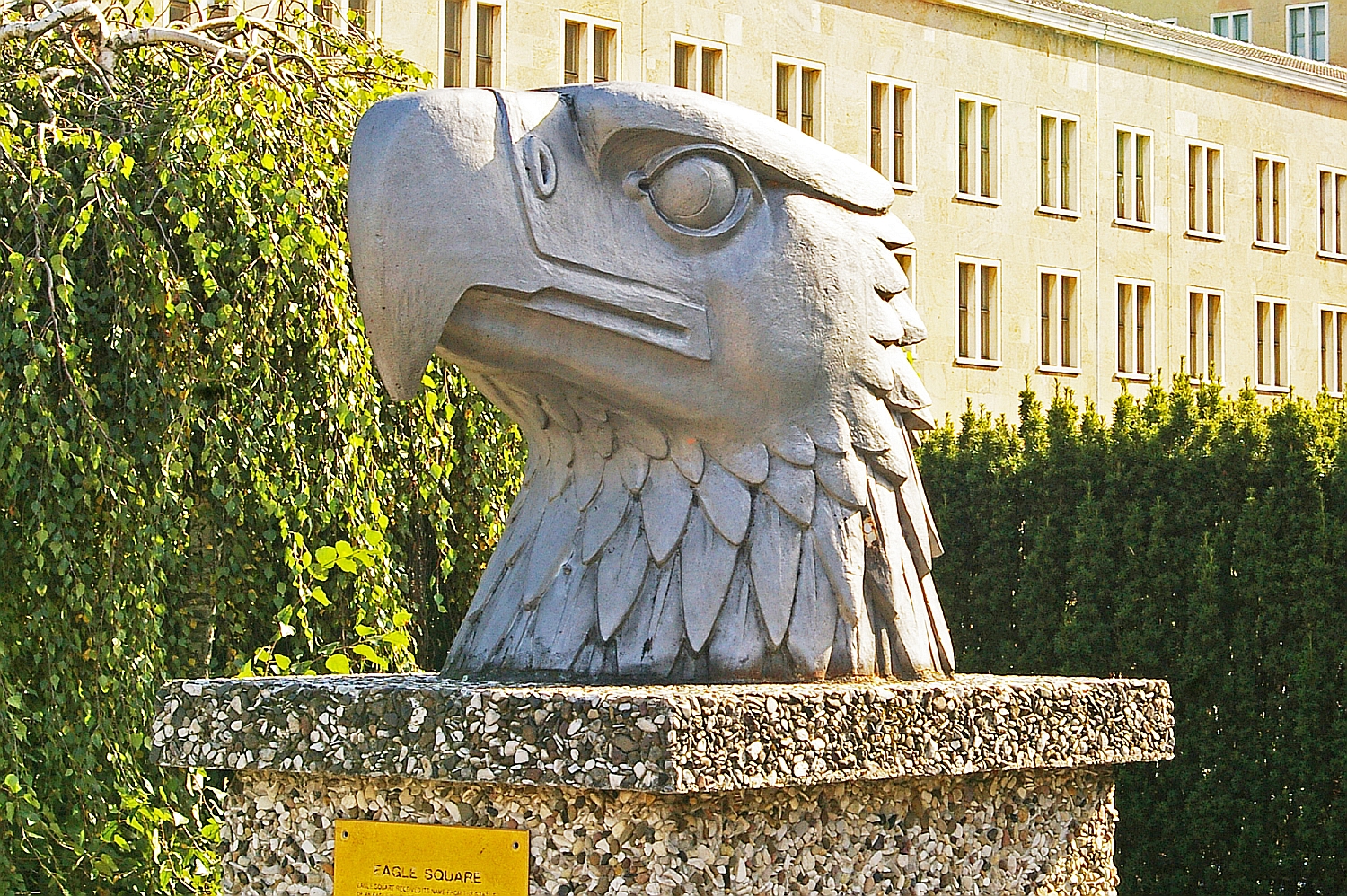Walter Lemcke on:
[Wikipedia]
[Google]
[Amazon]
Walter E. Lemcke (19 August 1891 – 1955) was a German
 Lemcke produced numerous pieces that depicted eagles, the
Lemcke produced numerous pieces that depicted eagles, the
sculptor
Sculpture is the branch of the visual arts that operates in three dimensions. Sculpture is the three-dimensional art work which is physically presented in the dimensions of height, width and depth. It is one of the plastic arts. Durable sc ...
who mainly worked in bronze. He produced numerous sculptures for Nazi Germany
Nazi Germany (lit. "National Socialist State"), ' (lit. "Nazi State") for short; also ' (lit. "National Socialist Germany") (officially known as the German Reich from 1933 until 1943, and the Greater German Reich from 1943 to 1945) was ...
, including the eagles holding swastikas that flanked the entrance of the Ministry of Aviation
The Ministry of Aviation was a department of the United Kingdom government established in 1959. Its responsibilities included the regulation of civil aviation and the supply of military aircraft, which it took on from the Ministry of Supply.
...
in Berlin
Berlin ( , ) is the capital and List of cities in Germany by population, largest city of Germany by both area and population. Its 3.7 million inhabitants make it the European Union's List of cities in the European Union by population within ci ...
. He is also remembered as being the designer of the first Olympic Torch
The Olympic flame is a symbol used in the Olympic movement. It is also a symbol of continuity between ancient and modern games. Several months before the Olympic Games, the Olympic flame is lit at Olympia, Greece. This ceremony starts the Olym ...
, which carried the flame during the 1936 Summer Olympics torch relay.
Several of Lemcke's works remain today and are featured in parks and museums around Germany.
Works
Nazi eagles
 Lemcke produced numerous pieces that depicted eagles, the
Lemcke produced numerous pieces that depicted eagles, the national symbol
A national symbol is a symbol of any entity considering and manifesting itself to the world as a national community: the sovereign states but also nations and countries in a state of colonial or other dependence, federal integration, or even an e ...
used by the Nazi government. Examples of these works include two large sculptures that featured at the newly built Ministry of Aviation office in Berlin. These eagles added to the Nazi symbolism of the building, themselves gripping swastikas and stood atop decorative columns. At the end of World War II
World War II or the Second World War, often abbreviated as WWII or WW2, was a world war that lasted from 1939 to 1945. It involved the vast majority of the world's countries—including all of the great powers—forming two opposing ...
the sculptures were removed from what is now the Detlev-Rohwedder-Haus
The Detlev-Rohwedder-Haus (Detlev Rohwedder House) is a building in Berlin that, at the time of its construction, was the largest office building in Europe. It was constructed between February 1935 and August 1936 to house the German Air Ministr ...
.
Perhaps Lemcke's most significant eagle statue was the one that once stood on the roof of the Berlin Tempelhof Airport. Designed by Ernst Sagebiel
Ernst Sagebiel (2 October 1892 in Braunschweig (Brunswick) – 5 March 1970 in Bavaria) was a German architect.
Life
Sagebiel was a sculptor's son, and after his ''Abitur'' in 1912, he began his studies in architecture at the Braunschweig Univ ...
and implemented by Lemcke, it stood at 4.5 m and was visible for many miles. Rather than holding a swastika in its claws, this sculpture grasped a large globe to symbolise the international aspect of the airport. The sculpture was cast in iron before being treated to appear bronze. In 1962 the statue was removed to make way for the installation of new radar equipment. The airport was closed in 2008 and the head is now located near to the entrance of the nearby Platz der Luftbrücke
Platz der Luftbrücke is a landmarked This led to the area being named "Eagle Square".
Involvement in the 1936 Summer Olympics
Lemcke designed the 27 cm wood and metal torches. German manufacturer Krupp produced 3,840 copies for the runners, over 500 more than would be needed. The shaft of the torch featured an eagle over theOlympic rings
The International Olympic Committee (IOC) uses icons, flags and symbols to elevate the Olympic Games. These symbols include those commonly used during Olympic competition—such as the flame, fanfare and theme—as well as those used throughout ...
.
Along with the torch, Lemcke sculpted a bell that was struck as part of the opening ceremony. The bell features the inscription "" (I summon the youth of the world).
References
{{DEFAULTSORT:Lemcke Walter 1891 births 1955 deaths German sculptors German male sculptors Place of birth missing Place of death missing Date of death missing 20th-century German sculptors